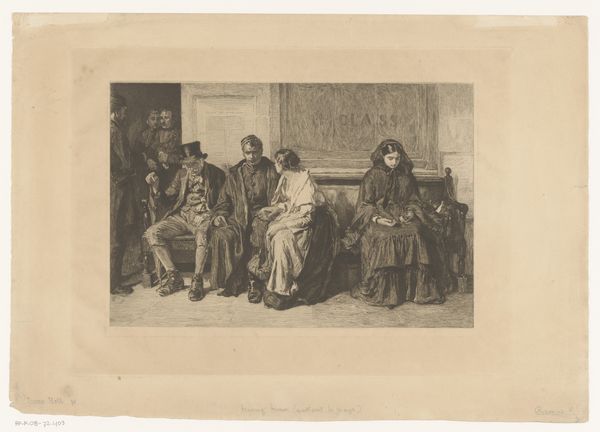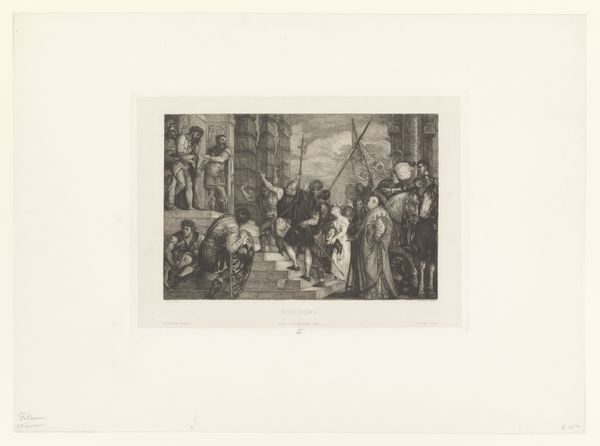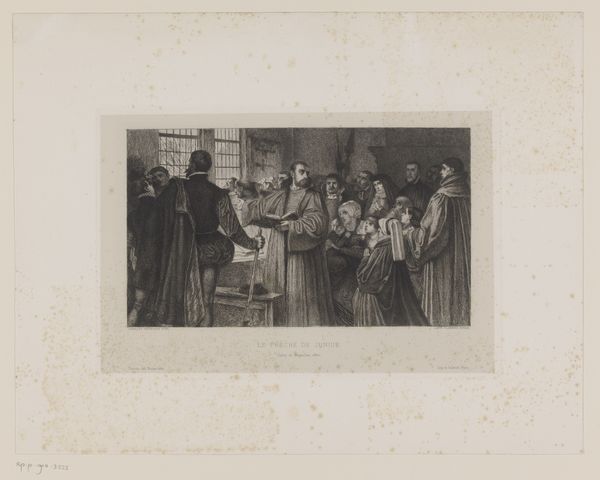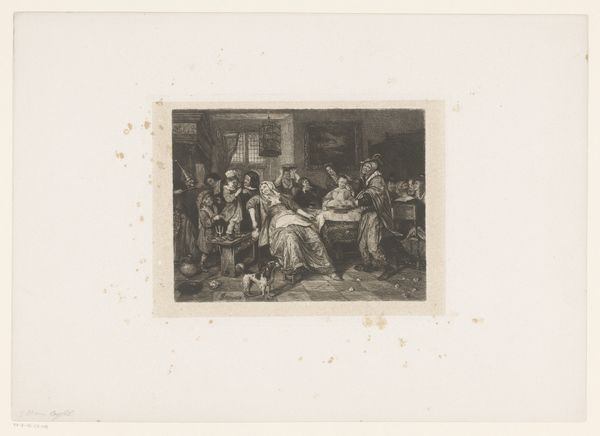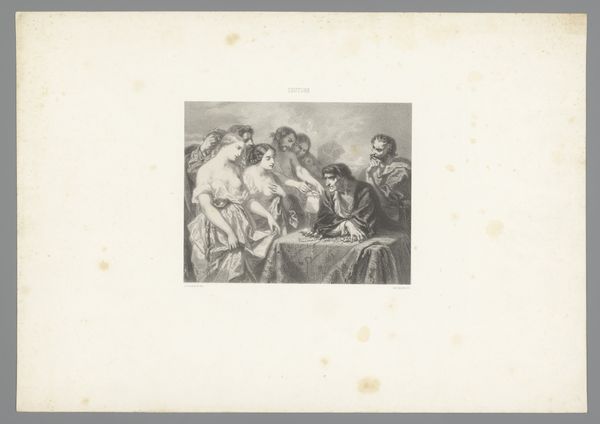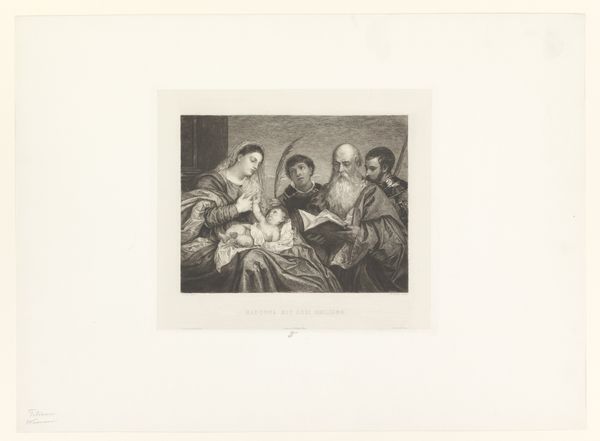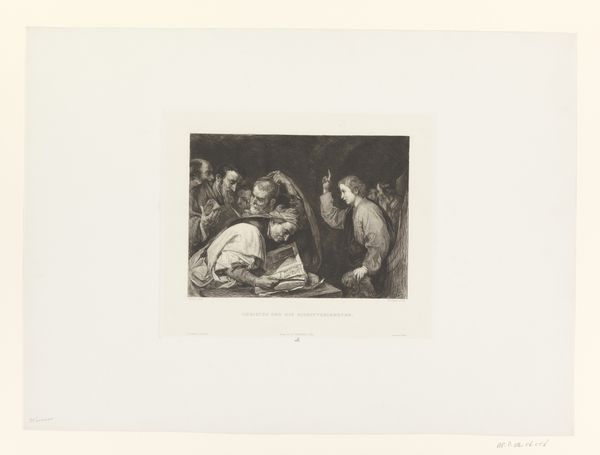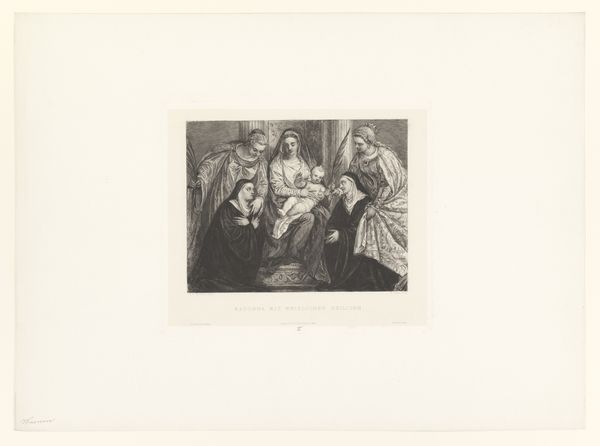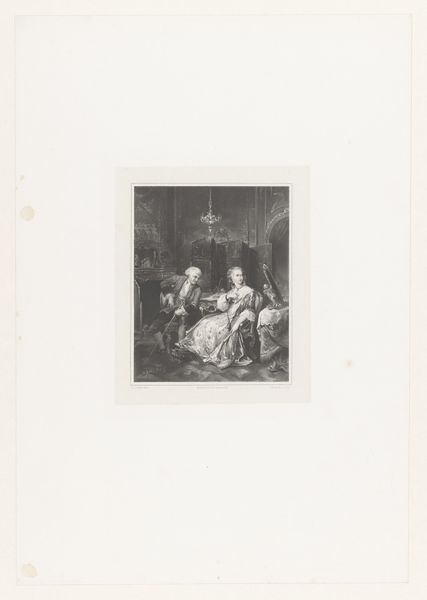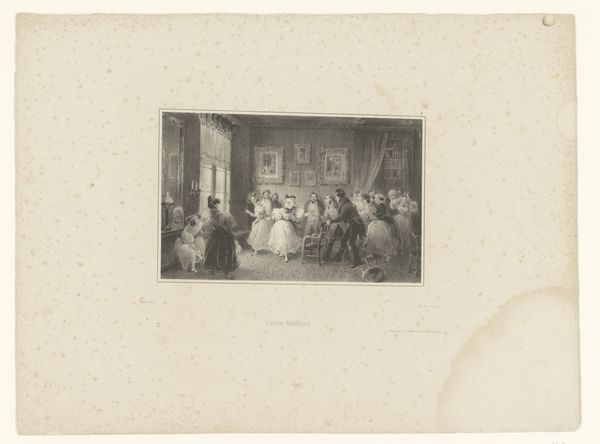
print, paper, engraving
# print
#
paper
#
group-portraits
#
genre-painting
#
history-painting
#
academic-art
#
engraving
#
realism
Dimensions: height 272 mm, width 330 mm
Copyright: Rijks Museum: Open Domain
Editor: This is William Unger’s engraving, "Christus en de overspelige vrouw," made sometime between 1861 and 1889. It's a dramatic scene. The woman in the center looks so ashamed surrounded by accusers. How do you interpret this work, considering its historical context? Curator: This print offers a powerful lens through which to examine social structures of power and judgement, especially those targeting women. Consider the biblical story it depicts: a woman accused of adultery brought before Jesus. What does it say about the performance of piety, and who benefits from upholding these structures? Editor: I hadn't thought about the "performance of piety." The men surrounding her certainly look self-righteous. Do you think Unger is critiquing them? Curator: Absolutely. The Realist style employed highlights the individual expressions, inviting us to question their motivations. Realism here serves not just to represent reality, but to dissect its moral underpinnings. Who holds the power, and how do they wield it? Editor: So it’s less about the religious aspect and more about societal control? Curator: It's both. Religion is a vehicle through which social control is often enforced, particularly concerning female sexuality and behavior. Where does the woman's narrative exist within the story and within the composition itself? Are we seeing her perspective or are we being positioned with her accusers? Editor: That makes me see the work in a totally different light. I’d assumed it was simply a historical scene, but it's a critique of power dynamics. Curator: Exactly! The enduring power of images lies in their ability to spark such dialogues and encourage critical thinking about the world around us. Editor: I learned that understanding the social commentary gives such depth to Unger’s work! Thanks so much!
Comments
No comments
Be the first to comment and join the conversation on the ultimate creative platform.
